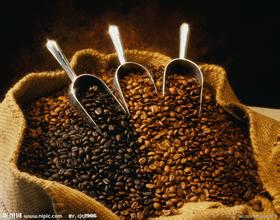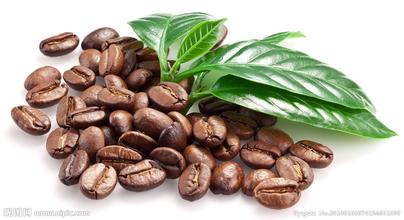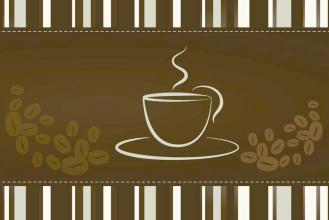Siphon pot coffee powder particle size powder thickness
Siphon pot coffee powder particle size powder thickness
Siphon coffee focuses on taste and aroma. Therefore, the grinding speed can not be too fast, too fast and easy to overheat, overheating will accelerate the volatilization of aromatic substances in coffee powder; nor too slow, coffee powder exposed to the air for a long time, of course volatilization more; to contact the progress of heating, master a degree, moderate grinding speed; generally positive after a few laps can be reversed to make siphon coffee, the use of hand bean grinder, more emotional, but also can meet the demand. Adjust the fineness before use, and control the fineness of the coffee by adjusting the gap between the rotor and the powder. If the beans fall too fast, or if they remain unchanged for a long time, they all need to be adjusted. After boiling water, start grinding, so that the water in the siphon coffee pot can be ground before it boils, so that the coffee powder sends out aromatic substances in the air for the shortest time and can best maintain the original taste of the coffee.
1. Generally speaking, the fineness of coffee powder cooked by siphon can refer to the thickness of "ultra-fine granulated" sugar sold on the market. According to the use of filter paper or filter cloth, adjust the thickness of the powder, the use of filter paper coffee powder needs to be finer than using filter cloth; you can adjust the taste of the final coffee liquid by adjusting the thickness of the powder.
two。 Siphon pot is generally divided into 2 people, 3 people and 5 people, each person's standard is 120ml water, how much coffee powder do you add? Gouache ratio 8:1-17:1, that is, 15-7 grams are fine. (remember it's the ratio of water to coffee powder, not the ratio of coffee liquid to coffee powder)
3. Dry the lower pot with a dry cloth (to prevent uneven burning of the lower pot), fix the filter with filter cloth or filter paper with a hanging chain, and make sure it is well fixed and in the center position. If it is not fixed well, the water temperature of the upper pot will be too high.
4. Fill the lower seat with hot water (not boiled water, which can reduce the heating time). Insert the upper seat obliquely into the lower seat and heat. When the bubble becomes bigger (definitely not boiling), insert the upper pot vertically into the lower pot; you can also directly add boiling water (if it is boiling water, the fire must be low at the beginning to prevent the upper pot from spraying water) or warm boiling water into the lower pot, so that you can insert the upper pot directly and then start heating, so that the temperature of the water reaching the upper pot is not the same.
5. The water rises into the upper pot, and about 1/3 of the water enters the upper pot and begins to use a thermometer to measure the temperature (if the bubble through the filter screen covered with filter cloth or paper is too large when the water rises, it is not a scattered small bubble, that is, the filter is not fixed or in the center, and can be adjusted with a wooden spoon) When almost all the water enters the upper pot, the water temperature should be 90-95 degrees. 92 degrees is the golden temperature. If the temperature is too low, you can continue to heat it. At this time, the rest of the water in the lower pot has already boiled, and the coffee liquid in the upper pot is kept from falling by steam pressure. (you can adjust the amount of coffee extract by adjusting the water temperature and adjust the taste of the coffee liquid.)

Important Notice :
前街咖啡 FrontStreet Coffee has moved to new addredd:
FrontStreet Coffee Address: 315,Donghua East Road,GuangZhou
Tel:020 38364473
- Prev

Description of the Flavor of Iron pickup Coffee beans introduction to the taste manor of the grinding scale production area
In addition to Ethiopia, where Arabica originated from, the mutants or mixed-race varieties cultivated or found in Central and South America, India and East Africa are mainly Tibica and bourbon, and the genetic complexity is far lower than that of Ethiopia, which means that Arabica outside Ethiopia has weak physique and disease resistance.
- Next

Does the size of coffee powder affect the concentration of espresso?
Will the thickness of coffee powder affect the concentration of espresso-the coffee powder in the French press pot is thicker, the shallow roasted beans are slightly thicker, and the coffee veterans will look at the color and oil production of cooked beans before they decide to grind them. The lighter the roasted coffee is, the more complete and hard the fiber is, the more difficult it is to extract. It is appropriate to use fine grinding, but not too fine, so as not to highlight the sharp and sour taste. The deeper the baking degree
Related
- Beginners will see the "Coffee pull flower" guide!
- What is the difference between ice blog purified milk and ordinary milk coffee?
- Why is the Philippines the largest producer of crops in Liberia?
- For coffee extraction, should the fine powder be retained?
- How does extracted espresso fill pressed powder? How much strength does it take to press the powder?
- How to make jasmine cold extract coffee? Is the jasmine + latte good?
- Will this little toy really make the coffee taste better? How does Lily Drip affect coffee extraction?
- Will the action of slapping the filter cup also affect coffee extraction?
- What's the difference between powder-to-water ratio and powder-to-liquid ratio?
- What is the Ethiopian local species? What does it have to do with Heirloom native species?

